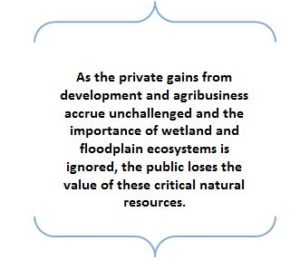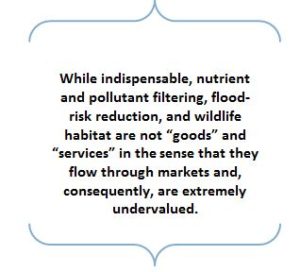by Alicia Claire Lloyd, Clean Water Policy Coordinator
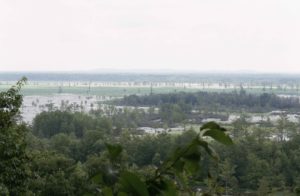
Missourians have lost up to a startling 87 percent of our state’s historic wetlands—one of the most productive and diverse ecosystems in the world. Wetlands are vibrant and fascinating ecological communities with unique soils that support vegetation adapted to wet conditions. In Missouri, wetland, such as swamps, marshes, and wet meadows serve critical natural functions for humans and wildlife alike. These waters were drained and filled en masse in the 1800s and early 1900s. Their conversion has continued incrementally over more recent decades with the expansion of suburban sprawl from city centers, the mass construction of levee and navigation systems severing rivers from their floodplains, and the intensification of industrial agricultural production.
Missouri Department of Natural Resources reports suggest about half of Missouri’s original 4.8 million acres of wetlands were located in the now heavily agricultural southeast Bootheel region and 3.6 million acres–or 87 percent of all destroyed wetlands–were lost to agricultural drainage. As the private gains from development and agribusiness accrue unchallenged and the importance of wetland and floodplain ecosystems is ignored, the public loses the value of these critical natural resources.
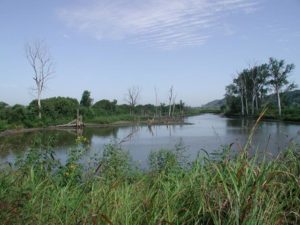
Government policy seeks to shape behavior, often by attaching carrots or sticks to specific choices. Cigarette taxes are meant to discourage smoking. We pay tickets as penalty for violating parking rules. Similarly, environmental policy uses permits and fines to discourage polluters or offers rewards for stewardship. Policies managing wetlands in Missouri are based primarily on federal regulation requiring developers to first apply for a permit to develop or convert wetland acreage to another land use, depriving others of their communal benefits. Permittees then incur some cost to compensate the public for permitted damages to wetland resources by mitigating the damages elsewhere.
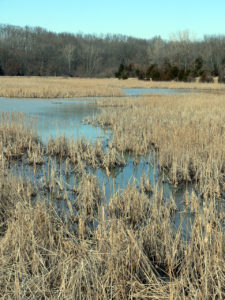
Section 404 of the federal Clean Water Act prohibits unpermitted “discharge of fill material” into waters of the United States on public or private lands. The US Army Corps of Engineers implements the 404 program and requires developers to mitigate permitted impacts to wetland and stream resources by purchasing credits from an approved wetland mitigation bank or restoring wetlands elsewhere themselves. The goal of the 404 program was to achieve “no net loss” of the state’s remaining wetland resource base by 1995. MCE and other organizations in the Mississippi River Collaborative work to watchdog this process and to advocate for quality mitigation activities with real environmental benefits. Unfortunately, the required mitigation for individual projects in Missouri and basinwide consistently falls short of the one-to-one ratio necessary to ensure a ‘no net loss’ of wetland resources. In order to reclaim the value of the drastic historical loss of wetlands and all the benefits they provide, we need to encourage restoration and protection through other means as well.
Policy can also provide incentives for preservation. The federal Farm Bill offers conservation supports, like the Wetlands Reserve Program and floodplain easements, through the Emergency Watershed Protection Program in which landowners voluntarily set aside wetlands or often-flooded land in long-term or permanent easements on their properties for payment. It is imperative to advocate for and support multiple policy mechanisms that encourage wetlands protections for the benefit of all Missourians—not just the industrial agricultural interests and commercial developers that benefit from draining and filling these critical resources. While we don’t write checks for these costs, we pay in access to clean, healthy waters throughout Missouri while private interests profit.
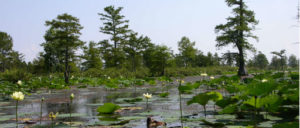
Human and natural systems alike depend on the ecosystem services our natural resources provide. Wetlands act like natural sponges, storing waters and filtering pollutants, such as nutrients, running off the landscape after rain events. Often found in floodplains, wetlands also hold floodwaters when rivers and streams overtop their banks, but this function is lost when we replace rivers with unnaturally channelized waterways.
Duck hunters, birders, and people who enjoy fishing recognize the critical ecological function wetlands serve as spawning grounds and nurseries for fish and travel corridors for migratory birds. While indispensable, nutrient and pollutant filtering, flood-risk reduction, and wildlife habitat are not “goods” and “services” in the sense that they flow through markets and, consequently, are extremely undervalued. As long as policy fails to account for the value of wetlands, in all its forms, we will see the continued destruction of these crucial ecosystems.
Check out MCE’s website to navigate maps of development projects across the state and to learn more about wetlands in Missouri. MCE’s efforts to watchdog Clean Water Act permitting of their destruction are displayed on our interactive story map, developed in collaboration with Washington University’s Interdisciplinary Environmental Clinic.


